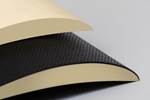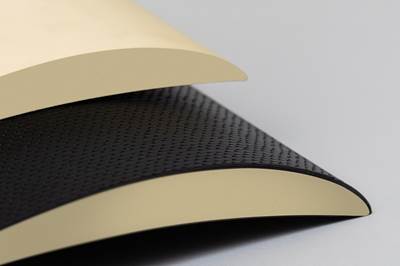Huntsman Advanced Materials resin systems meet composite pressure vessel requirements
Araldite resin systems cover wet and towpreg filament winding and RTM manufacturing processes for increased productivity and greater part consistency.

Photo Credit: Huntsman Corporation
According to Huntsman Advanced Materials (The Woodlands, Texas, U.S.), as hydrogen roadmaps and investments grow and enter new applications, hydrogen storage in pressure vessels will become a critical enabler for wide-scale adoption and the subject of intensive research and development. To further this progress, the company has developed the Araldite range for filament-wound composite pressure vessels. Encompassing high-performance epoxy, acrylic, polyurethane adhesives, high-performance specialty epoxy and benzoxazine resin systems, Araldite is said to be able to meet the stringent requirements for hydrogen storage. This includes pressure testing, impact resistance, chemical exposure and other temperature and pressure cycling tests and regulations.
According to Huntsman, while the pressure resistance of hydrogen vessels is mainly governed by the fiber reinforcement, the resin matrix plays a key role in providing environmental exposure protection (thermal, chemical, impact) as well as fatigue/pressure-cycling resistance to withstand the filling and emptying cycles. Table 1 below shows three examples of high-performance epoxy-based systems that offer a combination of thermal resistance, high mechanical strength, high elongation at break and high fracture toughness.
|
Resin system |
Araldite resin / |
Araldite resin / |
Araldite LY3508 / Aradur 3478 |
|
Process |
Wet filament winding |
Towpreg filament winding |
RTM |
|
Cure cycle |
2 hours, 80°C + 2 hours, 110°C |
30 min, 140°C |
20 min, 100°C + 2 hours, 130°C |
|
Tg (°C) DSC midpoint, ISO |
120 |
132 |
115 |
|
Tensile strength (MPa) ISO 527 |
75 |
77 |
70 |
|
Fracture toughness KIc (MPa.m1/2) ISO 13586 |
1.58 |
1.55 |
1.7 |
In addition, Araldite solutions for pressure vessels cover a range of manufacturing processes: wet filament winding is a well-established manufacturing method, but increasingly resin transfer molding (RTM) and towpreg winding are considered in order to meet the need for increased productivity and greater part consistency.
Huntsman Advanced Manufacturing further identifies the process features for each method, which offer a range of options for composite pressure vessel manufacturing. For example, wet filament winding is a well-established process, which offers winding speeds of 1-2 meters per second at maximum and a range of winding angles. Towpreg filament winding is a clean process, with fast winding speeds of >5 meters per second, with controlled and consistent resin content, variable winding speed (fast on hoops, slower on domes), a range of winding angles and optimized winding patterns. The process also enables high reproducibility and short cure times (down to 30 minutes). Alternately, the RTM process enables fast injection versus filament winding operations, fast cure in the mold (20 minutes), and is ideal for small-sized vessels. RTM also ensures high laminate quality (low porosity content), high investment (braiding, molds, press, dosing equipment) and higher resin content than towpreg and filament winding.
Building on a strong experience in natural gas pressure vessel technology, Huntsman Advanced Materials adds that it can offer a comprehensive range of epoxy resin systems that address the emerging challenges and manufacturing requirements for hydrogen storage. In addition, expertise in material characterization and process simulation offer a powerful tool to accelerate product development and optimize manufacturing, leading to increased part quality and minimum production cycle times.
This post is courtesy of the ÂÌñÏ×ÆÞ and media partnership.
Related Content
ECOHYDRO project to enable recyclable composites for hydrogen storage
With the involvement of two schools from the Institut Mines-Télécom, the 4-year project aims to improve the intrinsic properties of a composite material based on Elium via four concrete demonstrators.
Read MoreInfinite Composites: Type V tanks for space, hydrogen, automotive and more
After a decade of proving its linerless, weight-saving composite tanks with NASA and more than 30 aerospace companies, this CryoSphere pioneer is scaling for growth in commercial space and sustainable transportation on Earth.
Read MoreBraided thermoplastic composite H2 tanks with co-consolidated molded boss areas to fit EV battery space
BRYSON project demonstrates possible designs, automated manufacturing and low permeability concepts, including EVOH liner and novel PPA matrix.
Read MorePolar Technology develops innovative solutions for hydrogen storage
Conformable “Hydrogen in a Box” prototype for compressed gas storage has been tested to 350 and 700 bar, liquid hydrogen storage is being evaluated.
Read MoreRead Next
Huntsman PU resin systems enable lightweight sandwich construction for automotive
Vitrox RTM and Rimline FC polyurethane systems to advance lightweighting, design freedom and simplified manufacturing opportunities.
Read MoreCutting 100 pounds, certification time for the X-59 nose cone
Swift Engineering used HyperX software to remove 100 pounds from 38-foot graphite/epoxy cored nose cone for X-59 supersonic aircraft.
Read MoreUltrasonic welding for in-space manufacturing of CFRTP
Agile Ultrasonics and NASA trial robotic-compatible carbon fiber-reinforced thermoplastic ultrasonic welding technology for space structures.
Read More












